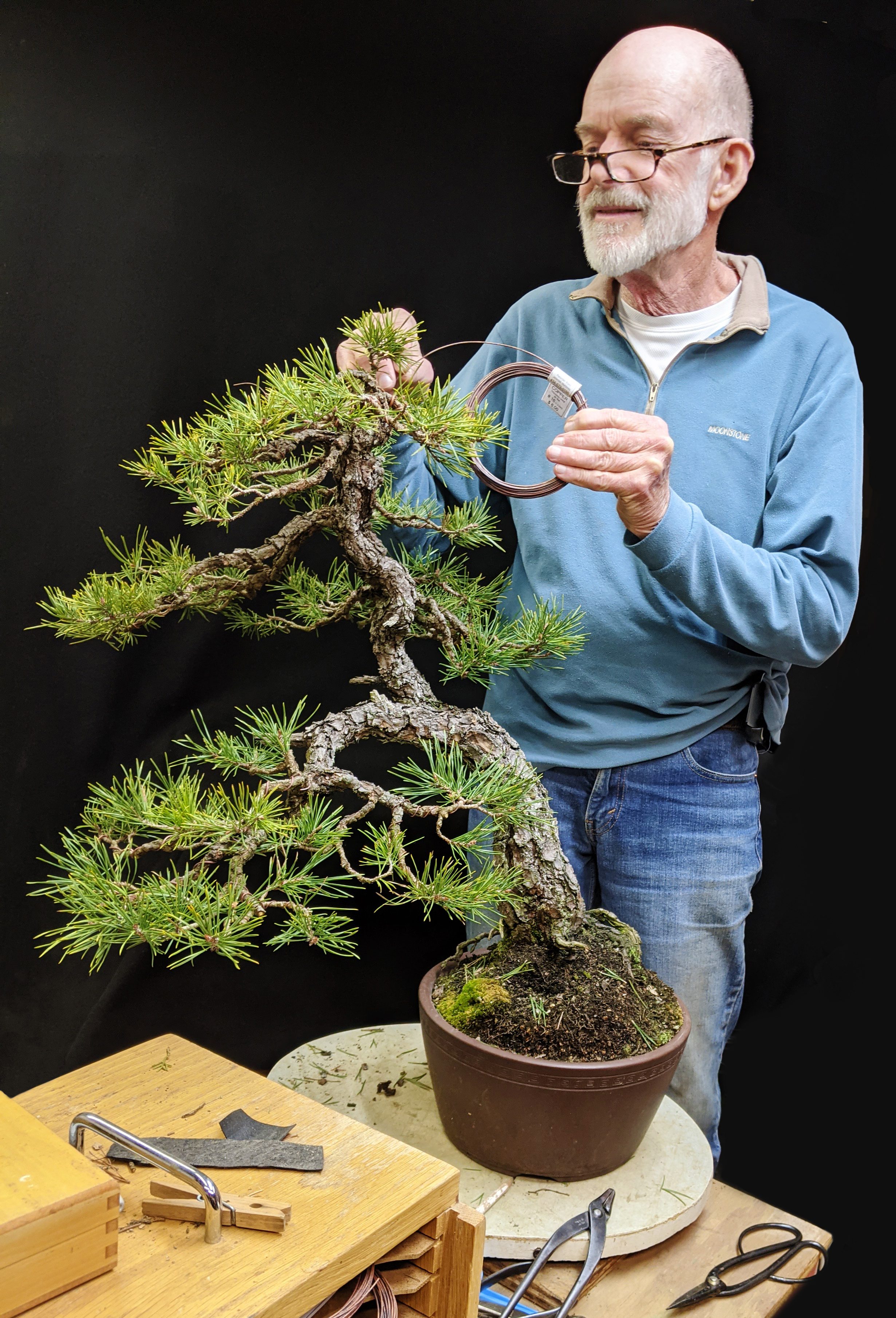The art of bonsai, according to an engineer
Julian Adams ’64

Julian Adams remembers clearly the first time he saw a bonsai. He was wandering a botanical garden as a young man when, among the orchids, cacti, and acres of vegetables, he stumbled on a room full of the diminutive and ancient trees. Adams had always felt a respect for older things, he says. Something about the bonsai struck a profound chord for him. “They changed my way of perceiving things,” he says. Soon after that fateful visit, he got his first bonsai as a Christmas gift. It marked the beginning of a lifelong passion that took him from studying radar technology and selling cars to running Adams Bonsai, a nursery he calls “a hobby gone berserk.”
Adams grew up in Virginia before leaving to study engineering at MIT. His childhood had been profoundly different from what he found in Cambridge, where he tried pizza and Chinese food for the first time. While many of his college peers had studied differential equations in high school, he’d never even taken calculus. He describes his first-year studies as “probably the most difficult thing I’ve ever done in my life.”
What saved his academic career, Adams says, were the fraternity brothers who helped him learn study skills, along with his time leading the crew team as coxswain. “I found out I enjoyed working with people toward a goal,” he says. Though his classes continued to be difficult, Adams found them fascinating. He focused on electronics, communication, and radio technology, and following graduation he put those skills to work doing radar defense work. But he soon found himself missing Virginia and ultimately moved home to Lynchburg to work at his father’s car dealership. “It wasn’t technical problem-solving but people problem-solving,” he says.
After his bonsai Christmas present, Adams spent 18 months practicing and experimenting before venturing into the strange world of the bonsai market. An art that has been studied and refined over centuries, bonsai dates back to sixth-century Japan and involves shaping and caring for a miniature tree that mimics the full-scale plant in its natural environment.
It “started with an absolute little piddly nothing hobby,” he says, “but like seeds when you plant them, they grow and grow.” He started by reading as much as he could on the subject, then sought out mentors to teach him more about the technique and science behind the art. His bonsai garden felt like his private biology lab, a place to experiment with trial and error, test hypotheses, and observe what made his trees the happiest. Soon, he began traveling to conferences and hobbyist meetups; he became a source of advice for other novices, specializing in bonsai pines. “At some point I realized I had so many plants I couldn’t possibly take care of them,” he says. When he offered them for sale, he was surprised at how quickly he found buyers, and Adams Bonsai was born.
Today, Adams prefers to grow his trees from seeds or cuttings so he can pay special attention to the taper of the trunk and the position of the branches, both keys to achieving the “old” aesthetics of bonsai. The goal, he says, is a living plant that thrives despite its limitations in its pot, grown “so as to represent, in miniature, an old tree which one imagines could exist somewhere in nature.” But achieving that goal takes time, patience, and careful work. Each tree must be watered daily and fed weekly, and watched carefully for potential pests or disease.
“I like to say that bonsai is 50% art, 50% horticulture, 50% philosophy,” he says. The practice may be based in horticultural science, but it’s focused on applying that science in a practical landscape through experimentation and exploration—much the way engineering applies math, chemistry, or physics. “There’s a need amongst us engineers to do things that are useful,” he says. “The way I think of bonsai is probably the way most engineers think about their field. There are basic skills, yes, but how can you use those skills in the world?”
Keep Reading
Most Popular
Large language models can do jaw-dropping things. But nobody knows exactly why.
And that's a problem. Figuring it out is one of the biggest scientific puzzles of our time and a crucial step towards controlling more powerful future models.
The problem with plug-in hybrids? Their drivers.
Plug-in hybrids are often sold as a transition to EVs, but new data from Europe shows we’re still underestimating the emissions they produce.
Google DeepMind’s new generative model makes Super Mario–like games from scratch
Genie learns how to control games by watching hours and hours of video. It could help train next-gen robots too.
How scientists traced a mysterious covid case back to six toilets
When wastewater surveillance turns into a hunt for a single infected individual, the ethics get tricky.
Stay connected
Get the latest updates from
MIT Technology Review
Discover special offers, top stories, upcoming events, and more.